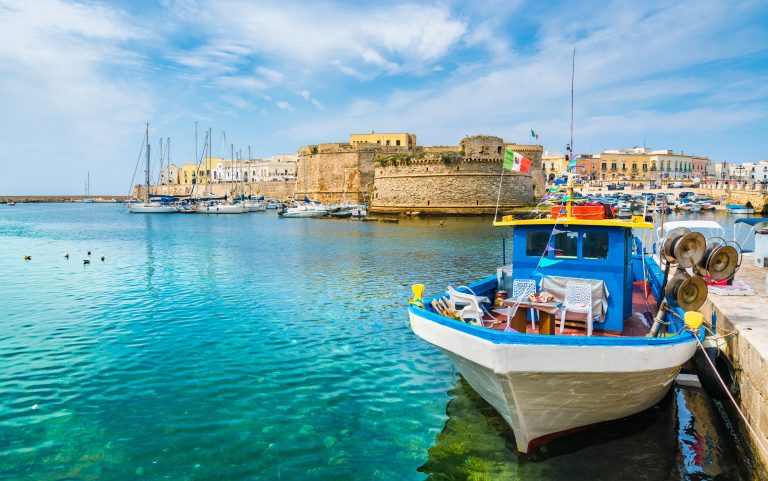Current surface temperatures in the Mediterranean basin are warmer than usual, reaching levels of up to 5-6°C above climatological average. A marine heatwave (MHW) was observed since the beginning of July 2023, now spreading eastward across the Mediterranean Sea.
MHWs occur when ocean temperatures cross an extreme seasonally-varying threshold for more than 5 days in a row. Since July 11, 2023, a MHW has hit the Gulf of Taranto, where the surface water temperature has reached a peak of 30°C, 2°C higher than the threshold temperature.
Last year, a record-breaking marine heatwave in the Mediterranean Sea affected the Ligurian Sea for 3 weeks, later hitting the Gulf of Taranto with greater intensity, reaching nearly 5°C above average.
Summer 2023
These plots represent the time series of surface temperature beginning at the start of May 2023 and going on to July: the pale gray line represents the Near-Real-Time observation, that is, satellite observations delivered through the Copernicus Marine Service that are considered as a truthful reference of what is happening day-by-day.
The full red line shows the average surface temperature for this time of year, calculated over a time period of 3 decades, from 1987 to 2019, while the dashed red line represents the marine heat wave threshold, which is defined as the limit above which temperatures are in the 10% most extreme values, historically.
Therefore, when temperatures rise above the MHW threshold for five days or longer, a marine heatwave is happening, shown in the plots with the orange colouring.
The yellow shading, on the other hand, represents so-called marine heat spikes, shorter extreme temperature events, which haven’t yet lasted for five days.
Finally, the blue lines represent the forecast, produced every week by CMCC, which has proved to be quite accurate as it correctly reflects real events and oscillations.
The litmus test for global warming
The Mediterranean Sea is a focal point for studying MHWs because the number of events, their duration and their intensity are increasing, and the basin is projected to be a real hotspot for climate change and global warming.
This increase in sea temperature has a significant impact on marine ecosystems, especially the fish fauna, as many fish species have an optimal life range within specific sea temperature values.
Beyond these values, exceeding the threshold, the fish fauna could suffer, die, or no longer be able to reproduce, leading to the possibility of finding very different species in our Mediterranean Sea in the not-too-distant future.
So-called alien species, such as tropical fish, are now able to find a suitable environment and suitable conditions for their life in the Mediterranean Sea due to the increasing sea temperature.











